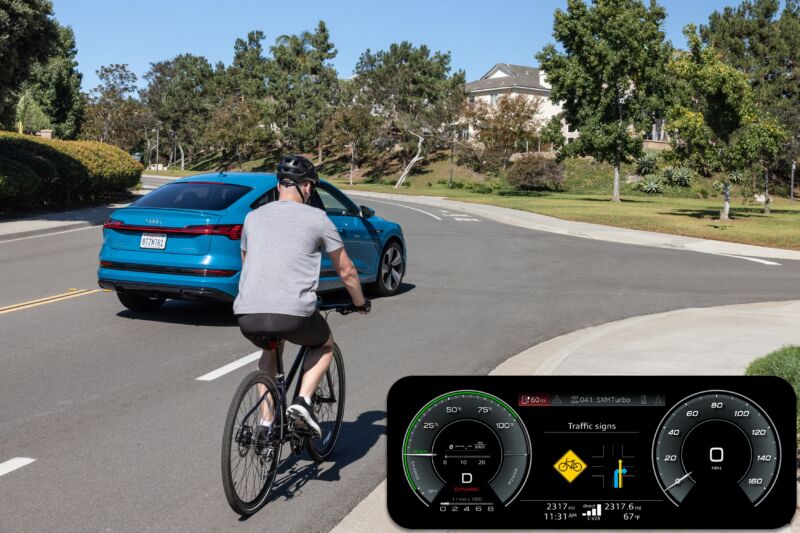
Enlarge / A C-V2X bicycle can alert a C-V2X-enabled car to its presence—note the large yellow icon on the screenshot of the Audi's digital instrument display. (credit: Audi)
There's a fundamental flaw in current car safety tech: It's limited to line of sight. Or, perhaps, line of "sensing" is more accurate, because the way cameras and lidar work is to inspect the perimeter of a vehicle and use predictive algorithms to understand the motion of an object in relation to the motion of the vehicle itself. Which is good, because as carmakers have added elements such as pedestrian and cyclist detection, they're trying to prevent drivers from hurting the most vulnerable road users. And unfortunately this is necessary, because even though 2023 saw a slight reduction in drivers striking cyclists and pedestrians, according to the most recent data from the Governor's Highway Safety Association, since 2019 pedestrian fatalities are still up 14 percent—and cyclist deaths are up 50 percent since 2010.
That doesn't mean lidar and cameras have "failed," but because they rely on what the sensors can pick up, they cannot necessarily ID hazards (and alert drivers) as quickly as we need them to, particularly if that's a cyclist in your lane 300 feet down the road, just over the next rise. Yes, current sensing works well now with figuring out the pace of a traffic jam, and automatic emergency braking can step in to stop your car if you fail to. But for non-automotive obstacles, they're still limited.
For that, we need better tech, which is emerging and is called Connected Vehicle to Everything (C-V2X). The idea isn't that complicated. Boiled down, it's a chipset that operates on a portion of the cellular bandwidth, and vehicles with this tech embedded (say in an e-bike or car) monitor anything with a C-V2X chip as well as broadcast their own location at a pulse of 10 times a second. This precision location system would then warn a driver of a cyclist on the road ahead, even beyond line of sight, and in an emergency—possibly because a cyclist was right in a car's path—could prevent a collision.
Read 14 remaining paragraphs | Comments
